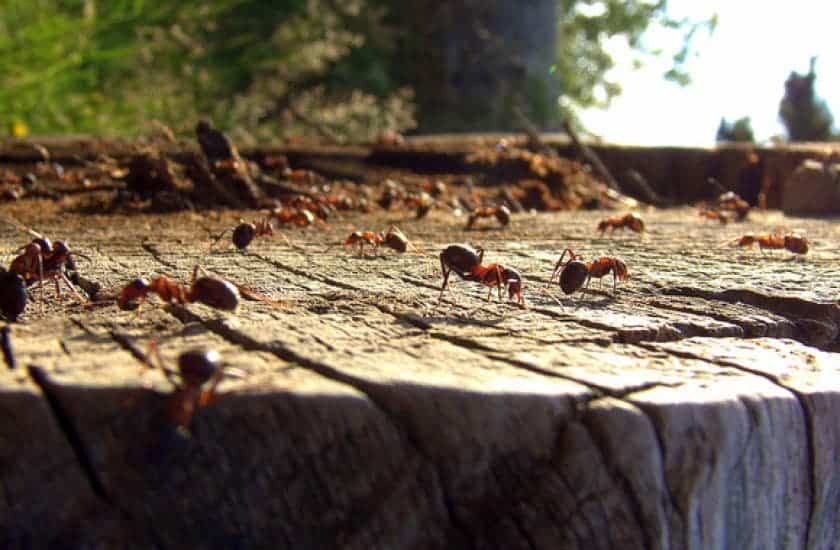Ants often get a lot of bad rep for being “pests” in the city, but a new study has shown that ant populations are actually very helpful in urban environments. Scientists researching the behavior of ants have found that they dispose of garbage with remarkable efficiency, keeping rats and other garbage-dependent pests at bay.

“Urban green spaces provide ecosystem services to city residents, but their management is hindered by a poor understanding of their ecology. We examined a novel ecosystem service relevant to urban public health and esthetics: the consumption of littered food waste by arthropods”, researchers introduce their paper.
The study was already well underway in 2012, when Hurricane Sandy struck New York; they decided to take advantage of this new setting and also observe how the behavior of insect populations changed. What they found was pretty surprising – ants are very effective at eliminating garbage; the ants that live on the median of Broadway alone can eat up to 60,000 hot dogs a year! They sampled ants and millipeds in street medians and parks by placing weighed samples of commonly dropped foods — hot dogs, cookies and chips — into wire mesh cages that only ant-sized creatures could crawl into. Next to these set ups, they put the same bait, but in the open, available for any creature to come and eat. After 24 hours they took both samples back, to see how much garbage ants alone eat compared to all the garbage-eating population combined. This is how they found that ants eat a lot of food, but they also learned that ants on the street eat much more than those in parks.
“We thought, oh, the parks, with their more diverse species — that’s where we’re going to see the ants doing a more thorough job. So we were surprised when the opposite was true,” said lead author Elsa Youngsteadt, a research associate at North Carolina State University.
As it turns out, even though street populations are less diverse, they eat 2-3 times more garbage than those in parks. Scientists believe that the pavement ants (so named for their habitat of choice) are probably the voracious eaters causing the imbalance.
“We calculate that the arthropods on medians down the Broadway/West St. corridor alone could consume more than 2,100 pounds of discarded junk food, the equivalent of 60,000 hot dogs, ever year-assuming they take a break in the winter,” said Elsa Youngsteadt, one of the researchers, in a news release. “This isn’t just a silly fact. This highlights a very real service that these arthropods provide. They effectively dispose of our trash for us.”

Indeed, we often tend to forget that insects are not just there to annoy us – they provide valuable ecosystem and even urban services. If the ants on a single street consume that much garbage, can you imagine what kind of service they provide for an entire city like New York? Unfortunately, most people still only see ants as a pest. When Youngsteadt was setting up her cages for the experiment, she said, a passerby asked her about her work.
“When he found out I studied ants, he said, ‘I sure hope you’re figuring out how to kill them.’ They’re definitely not popular,” Youngsteadt said. “But this study highlights that they have a purpose in the city ecosystem that we don’t even notice. They may be taking away food from rats, who it’s safe to say we like even less.”
Indeed, ants aren’t the only garbage-loving populations. The openly-placed bait food clearly showed that ants are fighting for this resource with other populations, most notably rats.
This study shows that ants play a very important role in a big city – they are effectively garbage cleaners. Oh, and even a hurricane can’t stop them. When Hurricane Sandy flooded many of the research sites with salty water, the team expected to see a drop-off in activity there – but ant populations emerged just as hungry as ever.
“You’d think that several feet of salt water would deter some ants,” Youngsteadt said. She’s not sure why they didn’t drown — it’s possible they just weren’t submerged for long enough. “But it’s good news for urban ecosystems. They’re going to stick around and keep doing their thing no matter what — even when a disaster happens.”
Ants are awesome, we should try to better understand them, and, I feel, we should respect them more.
Journal Reference: Elsa Youngsteadt, Ryanna C. Henderson, Amy M. Savage, Andrew F. Ernst, Robert R. Dunn and Steven D. Frank. Habitat and species identity, not diversity, predict the extent of refuse consumption by urban arthropods. Article first published online: 2 DEC 2014 DOI: 10.1111/gcb.12791



